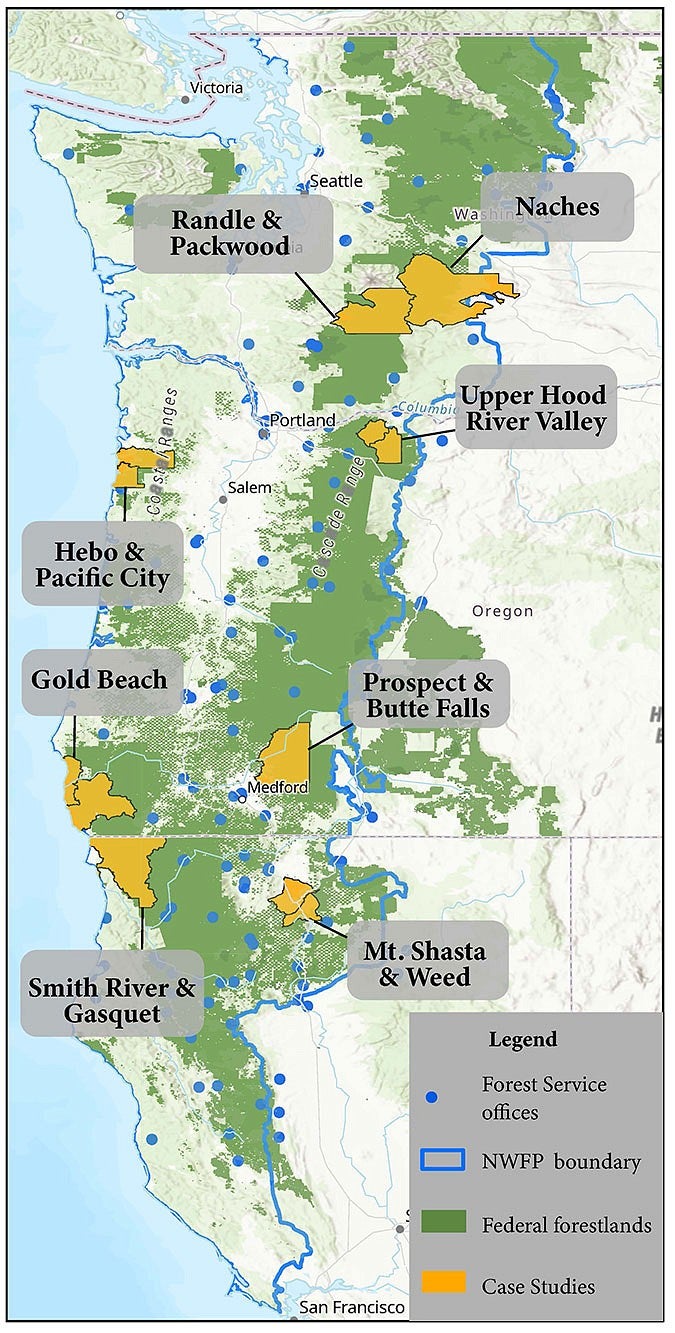30-Year Social and Economic Monitoring of Rural Communities in the Northwest Forest Plan Area
Overview
To resolve conflict surrounding forest management and endangered species conservation in the Pacific Northwest, the federal government adopted the Northwest Forest Plan (NWFP) in 1994. This plan significantly changed management on federal lands within the range of the Northern Spotted Owl, an endangered species living the forests of western Oregon, western Washington and northwestern California. To measure the social and economic impacts of these changes, monitoring is conducted every five years, with a specific focus on rural communities adjacent to federal forest lands. The goal of this monitoring is to shed light on the unique and evolving challenges and opportunities facing rural communities in the NWFP area.

Who We are
The Ecosystem Workforce Program is an applied research group focused on the intersection of economies, ecosystems, and communities. We have been contracted by the USDA Forest Service Region 6 to conduct the 25-year (in 2018) and the 30-year monitoring (now in progress).
Our Approach
We will be conducting case studies involving interviews of community members in eight National Forest Ranger Districts and surrounding communities in the NWFP area (Figure 1). Our team carefully selects a diversity of locations and community characteristics so that different types of communities are represented.
In each case study community, we will conduct 15-20 interviews with federal agency staff, community leaders, long-time residents, and other forest user and natural resource management groups (timber industry, recreation, environmental organizations, etc.). Interviews will focus on identifying changes in the communities’ relationship with the Forest Service, local natural resource management issues, industry changes, and social and economic trends.
Products from Research
We share findings through published papers, technical reports, presentations, and other materials designed to inform federal policy and outreach related to social and economic conditions for communities in the Plan area.
Results from the 25-year monitoring include
- USDA Forest Service PNW General Technical Report
- Changes in Relationships between the USDA Forest Service and Small, Forest-Based Communities in the Northwest Forest Plan Area amid Declines in Agency Staffing.
- Socioeconomic Trajectories of 10 Rural Federal Forest-Based Communities in the American Pacific Northwest
Questions?
Contact Michael Coughlan at mcoughla@uoregon.edu.
